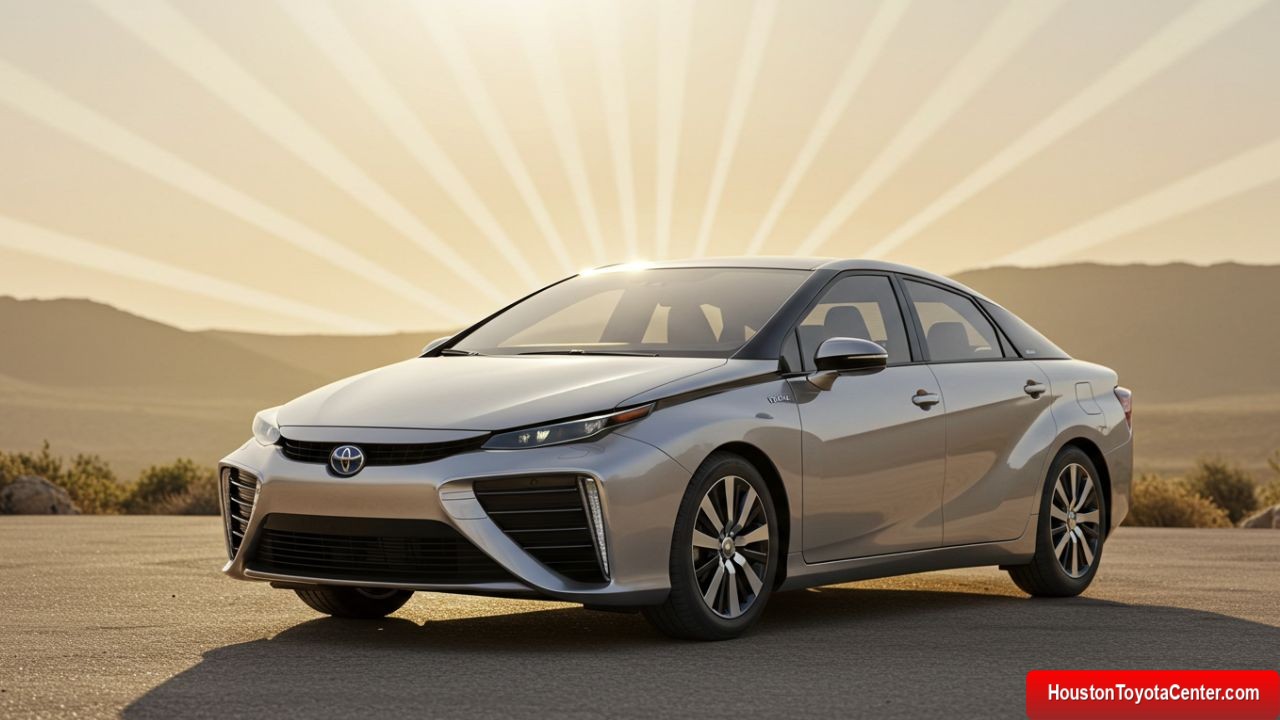In the ever-evolving landscape of automotive technology, Toyota has consistently been a pioneer. Among its many groundbreaking contributions, the Toyota Mirai stands out as a testament to the company’s commitment to innovation, sustainability, and environmental stewardship. The Mirai, meaning “future” in Japanese, is a hydrogen-powered fuel cell electric vehicle (FCEV) that represents a significant shift in the quest for cleaner mobility solutions.
A Vision of the Future
Launched in 2014, the Toyota Mirai is one of the world’s first mass-produced hydrogen fuel cell vehicles. Toyota’s vision for the Mirai was not merely to create another car but to redefine transportation by leveraging hydrogen’s potential as a clean and sustainable energy source. Hydrogen, the most abundant element in the universe, offers remarkable possibilities for powering vehicles without contributing to carbon emissions.
How the Mirai Works
The Toyota Mirai operates on a hydrogen fuel cell system, a marvel of engineering. Unlike conventional combustion engines or battery-electric vehicles (BEVs), the Mirai’s powertrain uses hydrogen stored in high-pressure tanks. This hydrogen is combined with oxygen from the air in a fuel cell stack, initiating an electrochemical reaction that generates electricity. The only byproduct of this process is water vapor, making the Mirai an emission-free vehicle.
The generated electricity powers an electric motor that drives the vehicle. Any surplus energy is stored in a small onboard battery, which supports performance during high-demand scenarios. This efficient and innovative system allows the Mirai to achieve remarkable energy conversion rates and driving performance.
FREE: Quickly identify and understand problems with your vehicle 🚘
CLICK HEREDesign and Performance
Toyota designed the Mirai to merge cutting-edge technology with aesthetic appeal. The car’s exterior reflects its futuristic ethos, with sleek lines, aerodynamic efficiency, and a distinct grille that signifies its unique powertrain. The interior, meanwhile, offers a blend of advanced technology and luxury, including a digital dashboard, premium materials, and an intuitive infotainment system.
Performance-wise, the Mirai impresses with its smooth and quiet ride, characteristic of electric propulsion systems. It can accelerate from 0 to 60 mph in about 9 seconds, providing ample power for everyday driving needs. With a range of approximately 400 miles on a full hydrogen tank, it rivals many traditional gasoline-powered cars and surpasses most BEVs in terms of driving distance.
Environmental Impact
One of the Mirai’s most compelling advantages is its minimal environmental impact. Unlike gasoline-powered vehicles, which emit significant amounts of carbon dioxide and other pollutants, the Mirai’s only emission is water vapor. This makes it an ideal choice for reducing the automotive industry’s carbon footprint and combating climate change.
Additionally, hydrogen production can be achieved using renewable energy sources such as wind, solar, and hydropower. By adopting green hydrogen production methods, the entire lifecycle emissions of a vehicle like the Mirai can be minimized, creating a truly sustainable mobility solution.
Overcoming Challenges
While the Toyota Mirai represents a leap forward, it also highlights the challenges associated with hydrogen as an energy source. The primary hurdles include the lack of hydrogen refueling infrastructure, the cost of hydrogen production, and the energy-intensive nature of the process.
- Infrastructure Development: Hydrogen fueling stations are scarce compared to conventional gas stations or electric vehicle charging points. However, regions like California, Japan, and parts of Europe are making strides in expanding their hydrogen networks.
- Production Costs: Producing hydrogen, particularly green hydrogen, remains expensive. Innovations in electrolysis technology and increased investment in renewable energy sources are expected to reduce costs over time.
- Energy Efficiency: The production, transportation, and storage of hydrogen involve energy losses, which can impact overall efficiency. Advancements in storage technologies and localized production methods aim to address these inefficiencies.
The Broader Implications of Hydrogen
Hydrogen-powered vehicles like the Toyota Mirai are part of a broader vision for a hydrogen-based economy. This concept envisions hydrogen as a primary energy carrier, replacing fossil fuels across various sectors, including transportation, industrial processes, and power generation.
For instance, hydrogen can be used to store surplus renewable energy, stabilize power grids, and fuel heavy-duty vehicles such as buses, trucks, and trains. Toyota’s work on the Mirai underscores the potential for passenger vehicles to play a role in this transition, serving as a catalyst for broader adoption of hydrogen technologies.
Toyota’s Commitment to Sustainability
The Toyota Mirai is a critical component of Toyota’s broader sustainability strategy. The company has set ambitious goals to achieve carbon neutrality by 2050, and hydrogen technology is central to this vision. Toyota’s investment in hydrogen extends beyond passenger vehicles to include buses, trucks, and even stationary fuel cell systems for buildings.
Toyota also collaborates with governments, research institutions, and other automakers to advance hydrogen infrastructure and technology. Initiatives such as the Hydrogen Council, of which Toyota is a founding member, aim to accelerate the global shift toward hydrogen energy.
Consumer Reception and Market Impact
Since its introduction, the Toyota Mirai has garnered attention from environmentally conscious consumers, technology enthusiasts, and policymakers. Its unique proposition as a zero-emission vehicle powered by hydrogen has positioned it as a niche yet influential player in the automotive market.
Although adoption has been gradual due to infrastructure limitations and higher upfront costs, the Mirai’s presence has sparked increased interest in hydrogen technology. Governments offering incentives for clean vehicles and hydrogen research are further bolstering its prospects.
The Second Generation: A Step Forward
In 2020, Toyota unveiled the second-generation Mirai, building on the successes and lessons of the original model. The new Mirai features improvements in range, performance, and design, making it more appealing to a broader audience. With a more dynamic and stylish look, enhanced driving dynamics, and advanced safety features, the second-generation Mirai aims to bring hydrogen power closer to the mainstream.
Future Prospects
The future of the Toyota Mirai and hydrogen-powered vehicles as a whole is promising yet contingent on continued innovation and investment. As renewable energy sources become more widespread and hydrogen production methods improve, the cost and efficiency of hydrogen vehicles are expected to enhance significantly.
Moreover, as countries implement stricter emissions regulations and aim for carbon neutrality, the demand for clean transportation solutions will rise. Toyota’s leadership in hydrogen technology positions the Mirai as a key player in this transformative era.
Conclusion
The Toyota Mirai embodies the potential of hydrogen as a clean and sustainable energy source. It represents a bold step toward reimagining mobility in a way that aligns with global environmental goals. While challenges remain, the Mirai’s innovation, efficiency, and vision make it a symbol of progress in the automotive industry.
As the world embraces cleaner and more sustainable energy solutions, the Toyota Mirai stands as a reminder of what’s possible when innovation meets commitment. By investing in hydrogen technology today, Toyota is shaping a future where zero-emission vehicles are not just an aspiration but a reality.


Leave a Reply